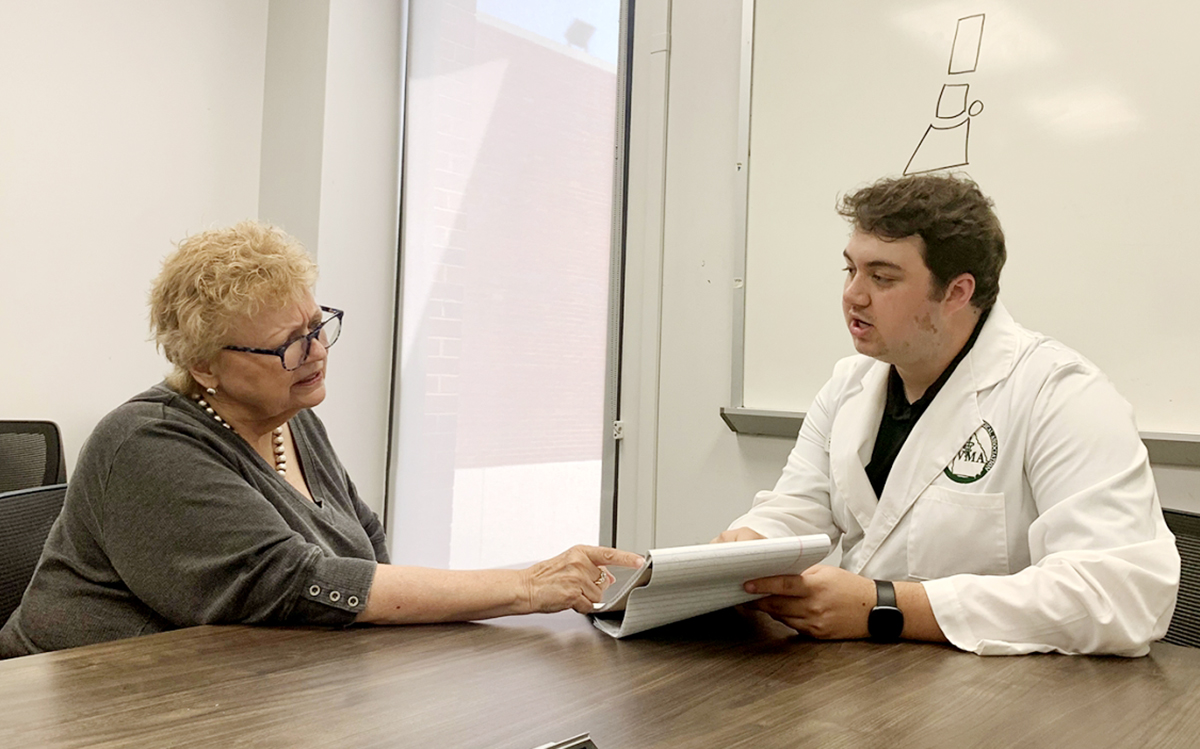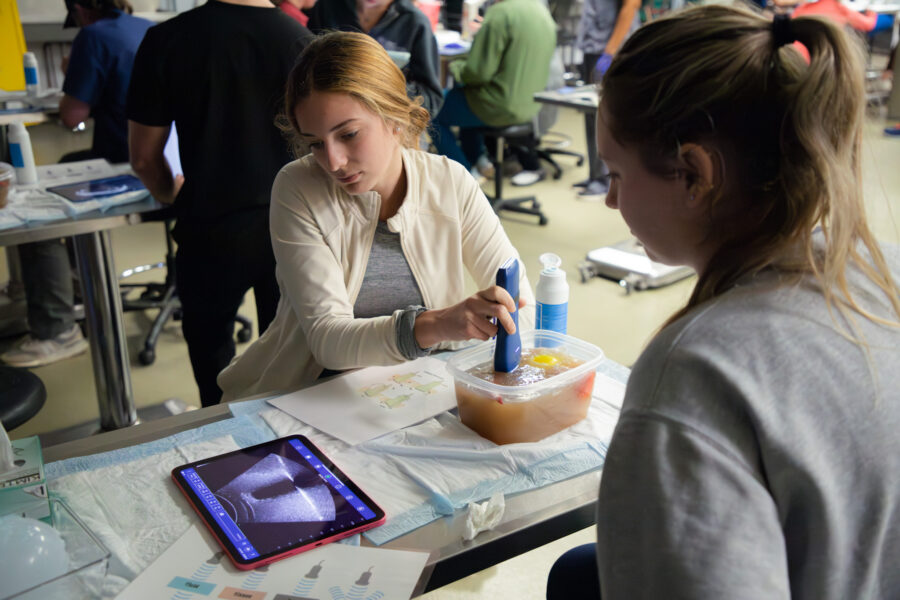Truth, trust, and transparency are key in a patient’s relationship with their healthcare provider. Good health for ourselves and for our pets requires near-perfect interactions with healthcare professionals that meets a range of experience and results. The humanistic element of medical, pharmaceutical, and veterinary training transcends bones, organ function, blood type, and a list of medications. How to bridge the gap? How to teach these students to develop their bedside manner?
The Advanced Communication Training Resource (ACTR) program supports development, training, and assessment for students and professionals in a variety of fields through developmental workshops and crafting simulated live encounters with authentic and meaningful role-playing experiences with trained actors. Since 2009, the program, once known as the simulated patient program, has applied high-level theatre skills—in developing creative thinking, empathy, teamwork, physicality, and improvisation—to help train medical students, pharmacy students and veterinary students at the University of Georgia.
“I’ve had really good health care, and I’ve had really bad care and it makes a difference, not just in addressing the physical health of a patient but also their psychological well-being,” said Jennifer Marks, Academic Professional and Managing Director of the ACTR program in the Franklin College of Arts and Sciences department of theatre and film studies. “Getting the patient or client to be compliant with the care you’re trying to give, getting the whole story from them, the dynamics of good care make or break this balance.”
The practice of using simulated patients goes back decades. The late American physician and medical educator Howard Barrows, Professor Emeritus at the Southern Illinois University School of Medicine, pioneered several innovations in medical education, including Problem-Based Learning and the assessment of clinical skills using simulated patients.
Training health and life sciences students in communication
The method Barrows developed to train physicians emphasizes consistency and standardization, regardless of how the student behaves. The UGA approach, rooted in contemporary actor training techniques, diverged from Barrows by emphasizing the ability to perform authentically in the moment and respond with subtlety and sensitivity to what the other person is doing.
Participants are called standardized patients in that every patient must be consistent with each encounter with each healthcare or life science student, so that each of them has an equal chance of passing their test. And while some simulated encounters are done for testing purposes (Barrow’s emphasis), the ACTR program is also utilized in pedagogy. SP/SC encounters are now an essential part of clinical training in many fields.
“It’s not only about getting those communication skills but learning to do physical exams, ask the right questions, convey important information, establish trust,” Marks said.


 “The ACTR program is essential for the training of DVM students. Communicating effectively with clients about patient needs is the most important skill that a veterinarian can possess,” said Andy Moorhead, associate professor in the UGA College of Veterinary Medicine who has worked closely with the program. “By interacting with trained actors throughout their training, it allows veterinary students to not only solidify essential core communication skills, but also exposes them to the more difficult conversations that often happen with owners.”
“The ACTR program is essential for the training of DVM students. Communicating effectively with clients about patient needs is the most important skill that a veterinarian can possess,” said Andy Moorhead, associate professor in the UGA College of Veterinary Medicine who has worked closely with the program. “By interacting with trained actors throughout their training, it allows veterinary students to not only solidify essential core communication skills, but also exposes them to the more difficult conversations that often happen with owners.”